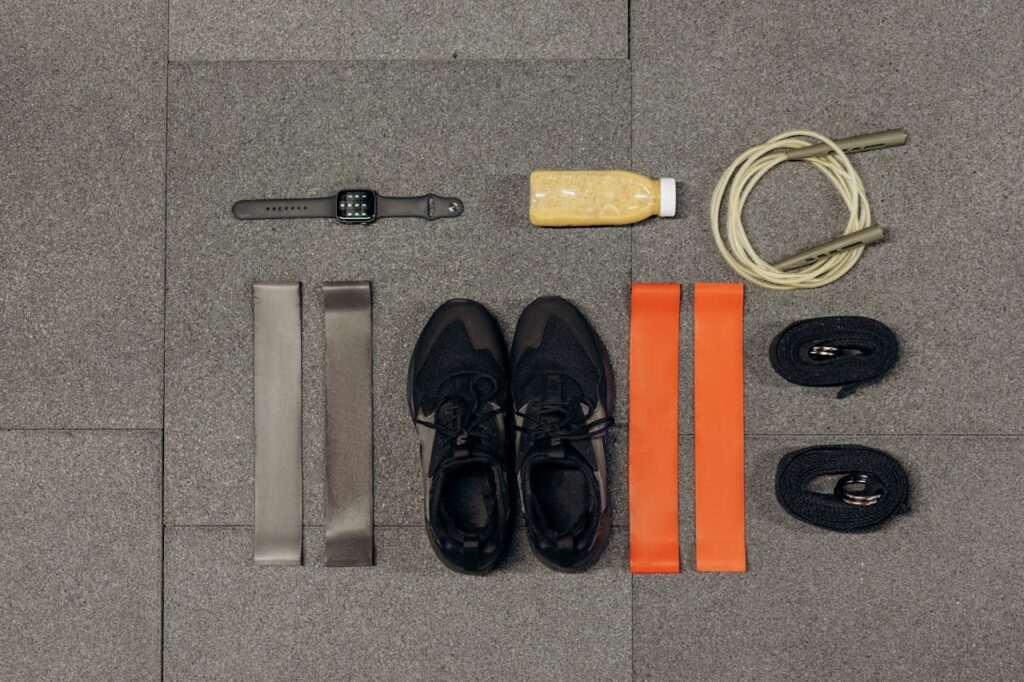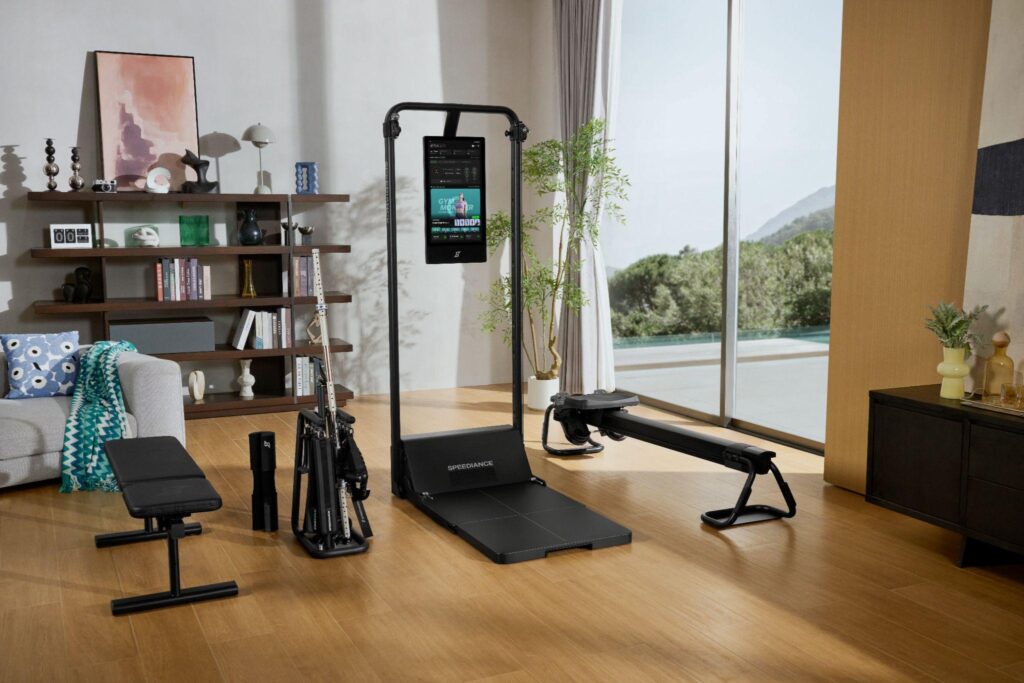Creating a room that functions as both a home gym and an office or guest space takes some planning, but the payoff is worth it. In this article, we’ll explore how to design a dual-purpose room that works for workouts, work, and welcoming overnight guests. You’ll learn practical tips about layout, furniture, equipment, and design so your space feels comfortable, useful, and adaptable.
Why Choose a Dual-Purpose Room
With limited space in most homes, it’s smart to combine multiple uses in one room. A space that functions as a gym and office, or as a guest room, allows you to make the most of every square foot. The key is to make sure each purpose fits naturally and doesn’t interfere with the other.
Compact home gym equipment, like modern foldable systems, can make this possible. Machines that fold away easily allow you to change the setup quickly from workout mode to work mode or guest mode—without clutter or chaos.
The picture shows Speediance Gym Monster 2.
Step 1: Define How You’ll Use the Space
Clarify Your Primary and Secondary Functions
Start by asking yourself what you’ll use the room for most often. Is it mainly a home gym that occasionally becomes an office, or an office that doubles as a guest room and gym? Knowing your main goal will help guide your furniture, layout, and lighting choices.
Estimate Frequency and Time Blocks
Think about when you’ll use the space for each purpose. If you work during the day and exercise early in the morning or evening, you’ll need an easy way to switch between functions. If guests visit only occasionally, you can keep the main setup focused on gym and office use while leaving flexibility for sleeping arrangements when needed.
Step 2: Choose Equipment and Furniture That Adapt

Select Compact or Foldable Gym Gear
Pick equipment that doesn’t take up too much room. Compact home gym systems, resistance bands, or foldable benches make it easy to store everything neatly when not in use. This flexibility helps you keep the space open and uncluttered.
Use Dual-Function Furniture
Choose items that serve multiple purposes. A desk with built-in storage, a sleeper sofa, or a wall bed can help transform the room from an office to a guest space within minutes. For your gym setup, a bench that doubles as seating or a small table when folded is a smart addition.
Consider Smart Storage Solutions
Keep your equipment organized with racks, baskets, or wall hooks. Rolling storage units or hidden compartments under a sofa bed can make cleanup fast and simple. The easier it is to store your items, the more likely you’ll maintain a tidy, flexible environment.
Step 3: Plan the Layout for Flexibility
Zoning and Traffic Flow
Divide the room into clear zones: one for workouts, one for work, or sleeping. Keep pathways open and make sure there’s enough space around the gym equipment for safe movement. Using separate areas for different functions helps the room feel balanced and practical.
Orientation and Lighting
Position your desk near natural light for productivity and place your gym equipment in a well-ventilated corner. Good lighting is essential for both uses: soft light for relaxation and bright light for workouts or work tasks. Curtains or blinds can also provide privacy when hosting guests.
Flooring and Acoustics
Choose flooring that suits both functions. Rubber mats or foam tiles protect your floor during workouts and can be easily removed when converting to guest or office use. Carpets or rugs can reduce noise and make the space feel cozy when used in a guest room.
Step 4: Decor and Design for Multi-Purpose Comfort
Unified Color Palette and Style
Keep the room visually cohesive with neutral colors like gray, beige, or light wood tones. A consistent color palette helps the space feel calm and organized, even when it serves multiple purposes.
Visual Separation Without Barriers
You don’t need walls to divide the room. Use rugs, lighting, or furniture placement to create distinct zones. For instance, a bookshelf can separate the office area from the gym section while also adding storage.
Personal Touches for Both Uses
Add decor that suits both purposes, such as framed art, plants, or soft textiles. Keep gym accessories neatly stored when not in use, so the room feels inviting for work or guests. A few well-chosen items can make the room feel welcoming without feeling cluttered.
Step 5: Establish Routines and Transition Cues
Routine for Switching Modes
Develop a simple routine for changing the room’s function. After work, clear the desk and prepare your gym area. Once finished with your workout, fold and store your equipment to reset the room for evening relaxation or guest use. Small habits make the space easy to maintain.
Maintenance and Upkeep
A clean, organized space supports productivity and comfort. Wipe down gym gear after use, store accessories properly, and keep the office area tidy. Before guests arrive, remove visible gym equipment and freshen the bedding. A five-minute cleanup each day helps keep the room ready for any purpose.
Concluding Thoughts
Designing a dual-purpose room that serves as a home gym, office, or guest space is easier than it seems. With careful planning, the right equipment, and adaptable furniture, one room can meet several needs without feeling cramped. Focus on flexible design, smart storage, and consistent upkeep, and you’ll have a space that changes seamlessly between fitness, work, and rest whenever you need it.

